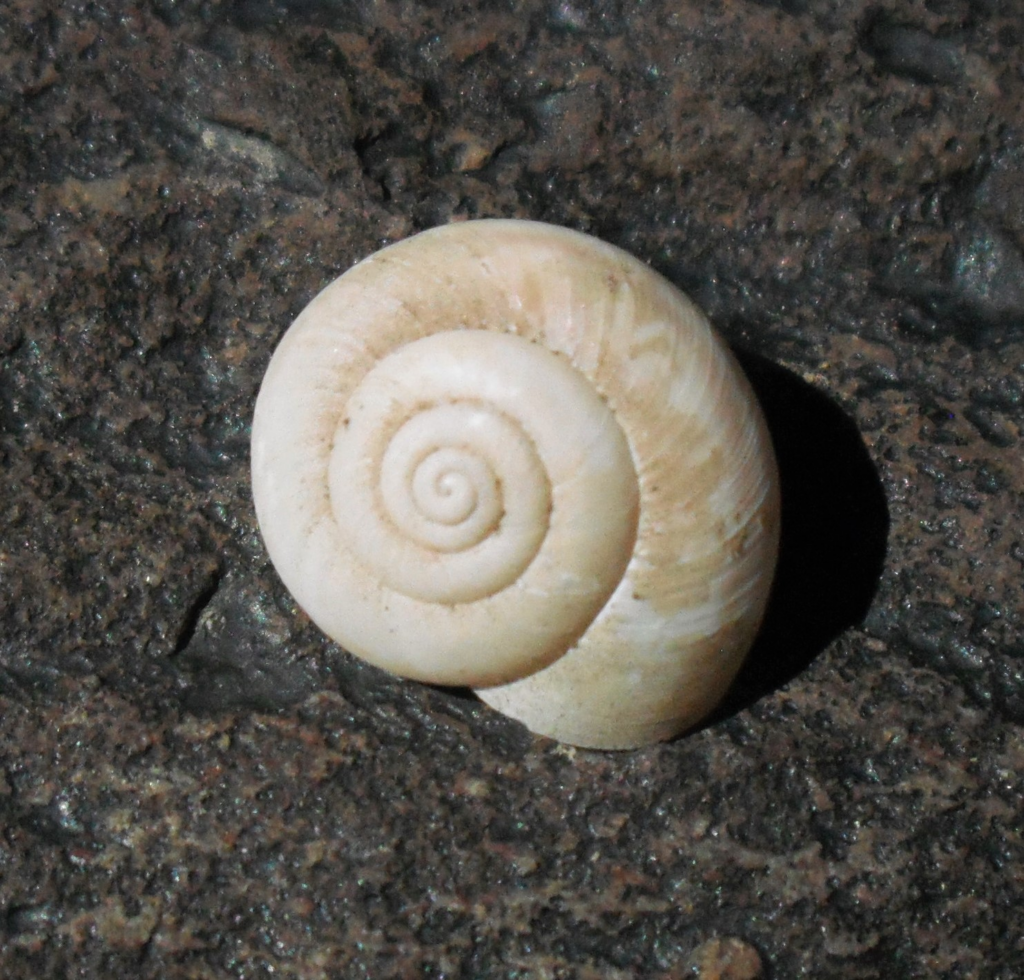
In the Mojave Desert you’ll find a species of snail that is truly one of the most interesting life forms that live there and yet it is often overlooked or unknown to most people. To start with, this snail has a shiny black body and of course its common name is “white desert snail.” Without a doubt it gets its name from its white shell. At first one might think that this snail lives in the various springs and other water sources that dot the desert landscape much like some of the fish species such as the pup fish of Death Valley. However, this is not so; this snail is a land snail and lives in virtually every mountain range in the Mojave Desert where there aren’t any springs or water sources of any kind. It truly is a desert snail.
While it has a wide distribution, its population is very thin and one could wonder how such a thin population could maintain itself and reproduce. However, the white desert snail has an answer to this; the snail is the true hermaphrodite; that is to say that each individual snail can reproduce on its own and thus does not need to meet up with another snail of the opposite sex.
One of the adaptations this snail has in order to live in the desert is its ability to go dormant in the ground for two to three years at a time and even in the best years it probably only has 20 to 30 days of moving around on the surface. Thus, it is rarely seen or noticed. However, if you are observant and watch the ground a lot you will occasionally find the white spiral shells that have been left behind.
I started noticing the snails years ago as I studied the various herds of bighorn sheep throughout the Mojave Desert and found a number of interesting comparisons between the two species. For one thing, the rams have large spiral horns and of course this snail has its spiral shell. Then on the other side of things, the rams are large and they are a symbol of power and strength whereas the snail is quite small, humble, and slimy. While active only after a rain the desert snail never uses or congregates around a spring. However, a herd of desert bighorn sheep must have this type of water available to them in order to survive.
Steep rocky terrain is the preferred habitat for both bighorn sheep and the white desert snail. This type of habitat allows the snail to use cracks and crevices to go down deep into the earth with little effort and to escape the extreme heat, cold, and dryness of the desert environment. While on the surface, this little snail can utilize the runoff from the rocks as they collect and concentrate the water and moisture that it needs. The rocks also reflect the sunlight and cast shadows allowing the snail to find the most advantageous places for it to be in the desert environment.
And while I understand the predator-prey relationship of bighorn sheep quite well, I can only speculate on the white desert snail as I have never seen any actual predation or sign of it. So I can only imagine two possibilities: one is that most animals don’t eat them because they have a bad taste (and we can see this with many species of toads) or on the other hand, it is picked off by birds and other predators whenever they’re lucky enough to find one although they would not actually go hunting for them due to their scarcity. And while this little guy does not have the title of rare or endangered it can definitely claim the title of unusual and fascinating and that is just the way of things in the desert.




